United Airlines’ odd airplane shopping spree continues…
In this post:
United invests in Heart Aerospace ES-19 aircraft
United Airlines Ventures (UAV), Breakthrough Energy Ventures (BEV), and Mesa Airlines, have invested an undisclosed amount in electric aircraft startup Heart Aerospace. UAV is United Airlines’ corporate venture capital fund, allowing the airline to invest in emerging companies that have the potential to influence the future of travel. The fund is focused on sustainability, and complements United’s goal of net zero emissions by 2050, without relying on traditional carbon offsets.
Heart Aerospace is developing the ES-19:
- The ES-19 is a 19-seat electric aircraft that has the potential to fly up to 250 miles
- The ES-19 could be introduced into the market as early as 2026, though more realistically by the end of the decade
- United has conditionally agreed to purchase 100 ES-19 aircraft, once the aircraft meets United’s safety, business, and operating requirements
- Furthermore, Mesa Airlines (a United Airlines regional partner) has agreed to conditionally purchase 100 ES-19 aircraft, subject to similar requirements
- The ES-19 would use electric motors instead of jet engines, and batteries instead of jet fuel; this would be larger than any of the currently all-electric competitors in the market
- The ES-19 could operate more than 100 of United’s regional routes out of most hubs, including from Chicago (ORD) to Purdue (LAF) and San Francisco (SFO) to Modesto (MOD)
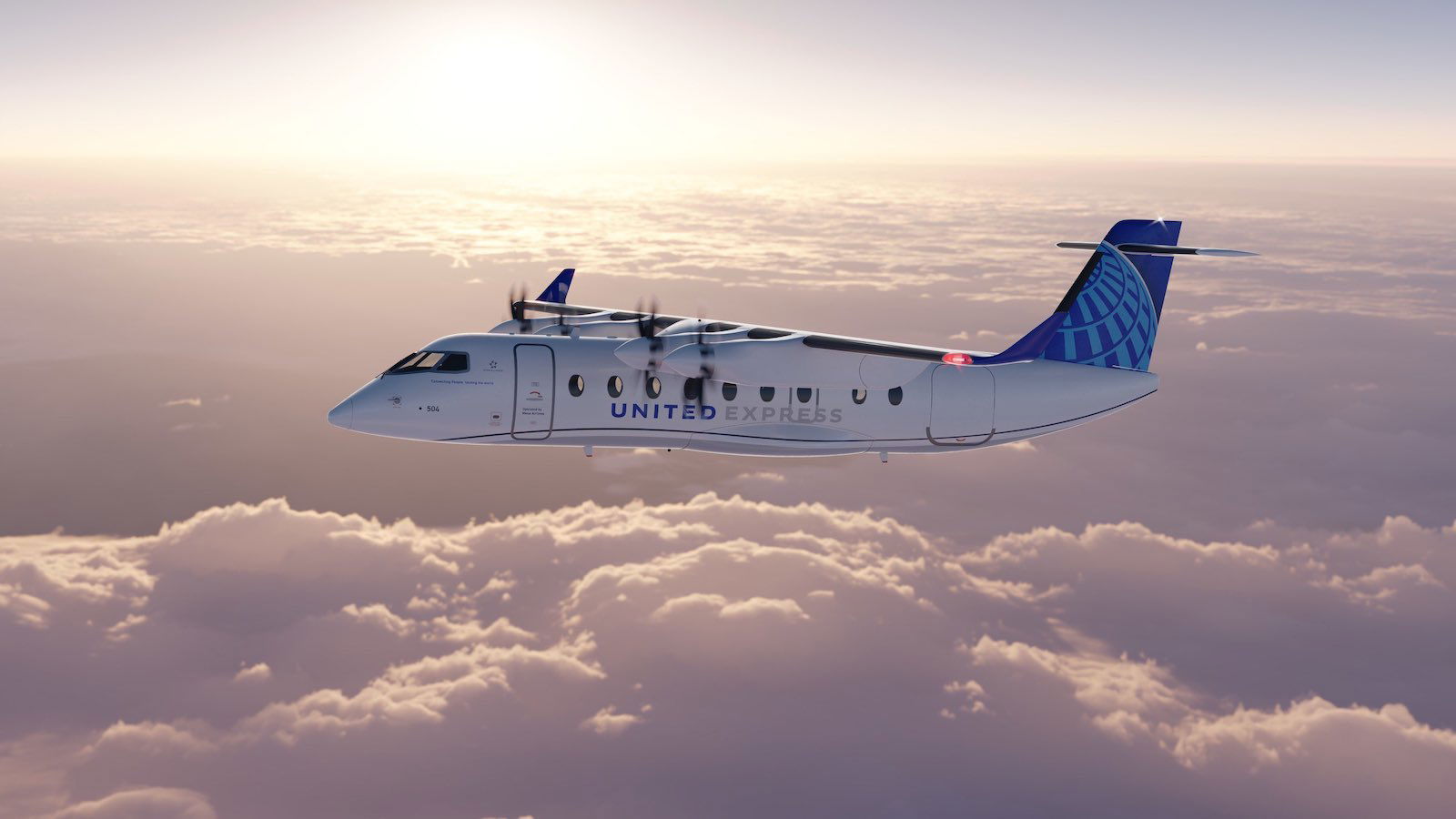
Is there a future for 19-seat aircraft?
In general it’s great to see investments in more sustainable aviation, and that’s coming in many forms. For example, Airbus is also working on designing zero-emission aircraft that could replace some of the mainline narrow body aircraft currently in service.
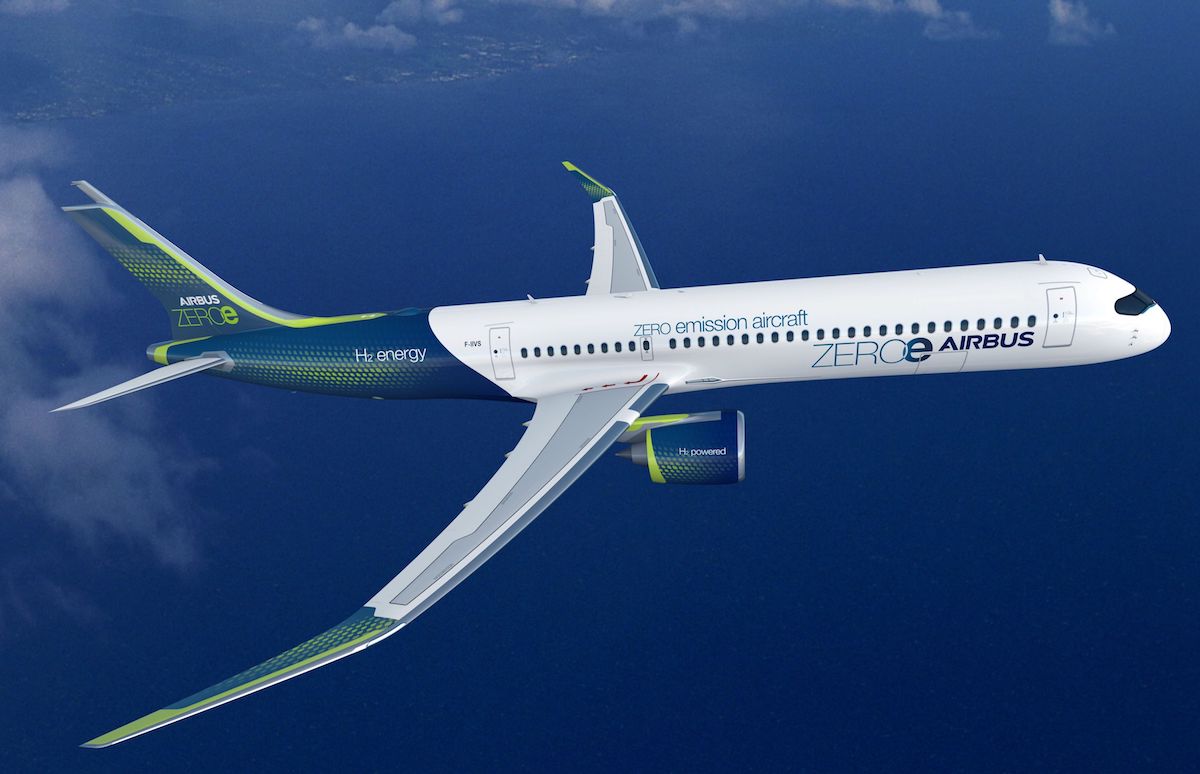
That being said, I can’t help but be puzzled in general by the concept of new 19-seat aircraft, even if they are electric:
- Major airlines have been shying away from smaller aircraft, and nowadays the regional partners of American, Delta, and United, no longer operate turboprop aircraft, instead focusing on 50+ seat regional jets
- Airports are becoming increasingly congested, and adding service with 19-seat aircraft out of major airports like ORD and SFO seems like a step backwards
- I question the big picture economics of 19-seat aircraft — will you have two pilots and maybe a flight attendant for such a small plane, and if so, how little will they be paid in order for this to be economically viable?
- Is this all about starting routes to get subsidies for Essential Air Service (EAS)?
United Airlines’ unusual aircraft orders
Despite the pandemic, 2021 has been quite a year for United Airlines in terms of its aircraft orders and investments. I’d put this in two different categories — actual aircraft orders, and then “aircraft orders.”
The biggest and most believable announcement has been that United is ordering 270 planes, including 737 MAXs and A321neos, which will be used to modernize the carrier’s fleet. This is an awesome development, especially as it’s part of a bigger project to refresh the cabins of narrow body aircraft.

On top of that, United has also invested in some other concepts, subject to them meeting the company’s “safety, business, and operating requirements,” which are some significant conditions.
For example, United plans to purchase 15 Boom “Overture” supersonic aircraft, with an option for an additional 35 aircraft. These planes will join United’s fleet no earlier than 2029.
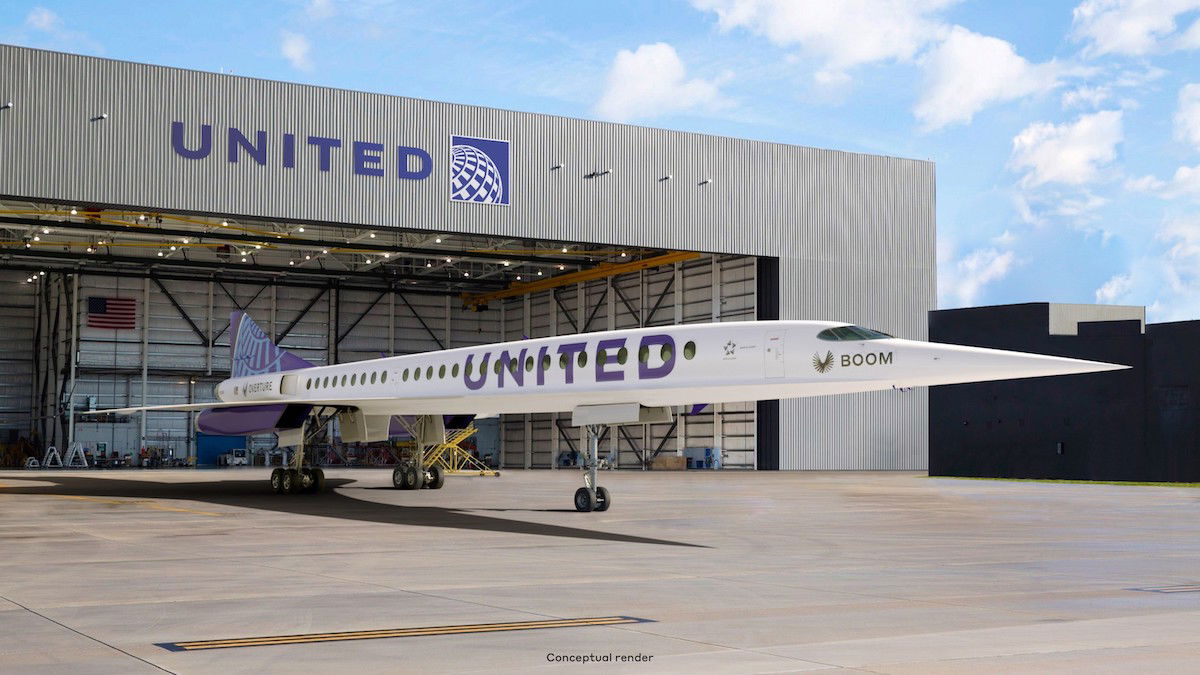
United also plans to purchase 200 Archer electric air taxis, which have the ability to take off and land vertically. These planes could fly a distance of up to 60 miles at up to 150 miles per hour, and are intended to revolutionize urban mobility. How exactly that fits into United’s business model remains to be seen.
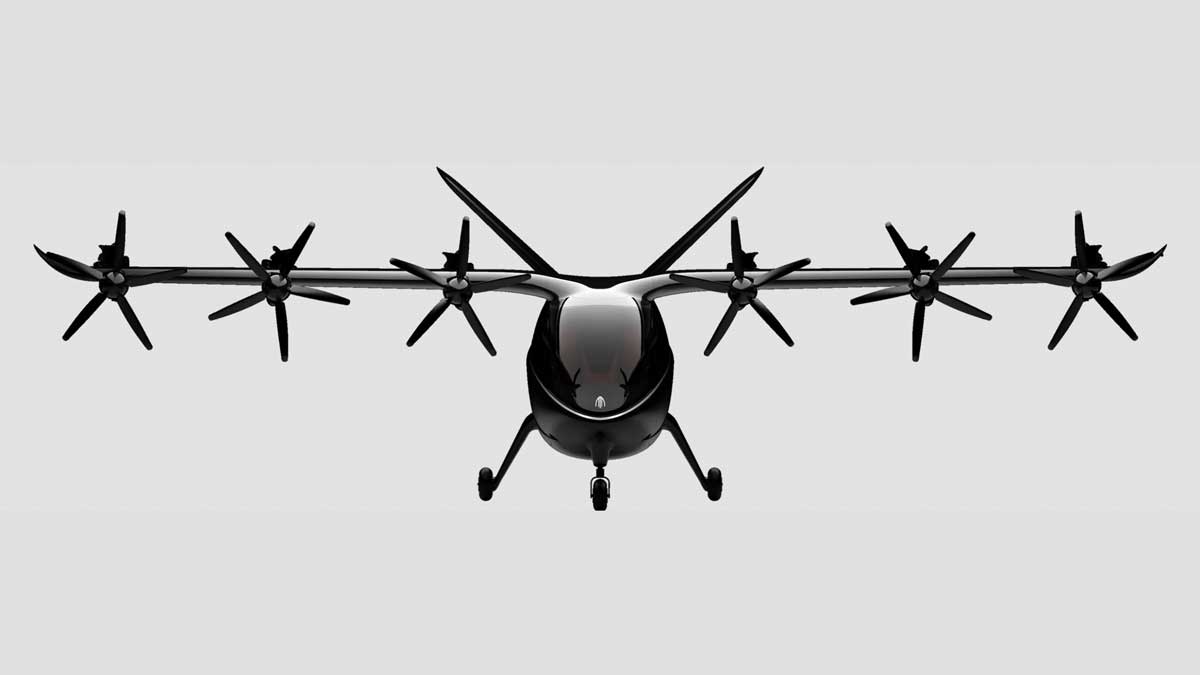
Keep in mind that all of these investments are coming as United receives billions of dollars in aid from taxpayers.
Bottom line
United Airlines is investing in Heart Aerospace, which is developing a 19-seat electric aircraft that could be flying as soon as 2026. In addition to the general investment, United has also tentatively ordered 100 of these aircraft, subject to the plane meeting United’s safety, business, and operating requirements.
While it’s cool to see this kind of technology emerge, I don’t totally follow how this is supposed to fit into United’s overall strategy. A 19-seat aircraft seems like a step backwards for aviation, especially with the congestion issues we’re already seeing at major airports.
What are the odds that in 2030 we take Archer electric air taxis to Newark, where we see a Boom Overture supersonic jet parked next to a Heart Aerospace ES-19? I’d put the percent odds in the single digits, personally…
What do you make of United’s investment in Heart Aerospace?


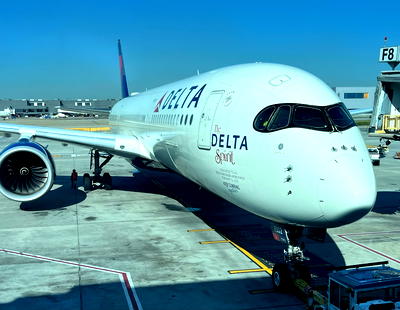
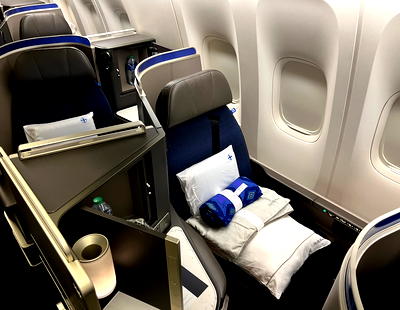

If Lord Jeff Bezos and Sir Richard Branson aren't involved, it'll never get off the ground.
"Keep in mind that all of these investments are coming as United receives billions of dollars in aid from taxpayers."
----------
This is a classic straw man argument. As is the case with prolonged wait times, there's no causal link between the PSP program and the other issues being raised.
How long do you reckon it will take to recharge the batteries for the return flight to the hub? Or, would each airport the airplane serves have spare, charged plug-and-play batteries?
The overall airline industry trend toward up-gauging will likely result in less and less service to smaller, isolated communities. It’s good to see a private sector response to this instead of forming “AmAir” to serve this market. I understand Scott Kirby and Norm Orenstein have close ties, so it isn’t surprising to see Mesa involved in this. The western U.S. has many small, remote towns. Maybe that’s another reason why Mesa, and not another regional...
The overall airline industry trend toward up-gauging will likely result in less and less service to smaller, isolated communities. It’s good to see a private sector response to this instead of forming “AmAir” to serve this market. I understand Scott Kirby and Norm Orenstein have close ties, so it isn’t surprising to see Mesa involved in this. The western U.S. has many small, remote towns. Maybe that’s another reason why Mesa, and not another regional carrier, is involved. Mesa started in Farmington, NM, a fairly remote town that can be somewhat isolated at times. I can see Sky West looking into this as well, as its headquarters is also in a relatively small, though less remote, western town. Distances in the west are often far from major cities. So, driving to the nearest large airport can be time-consuming.
To the battery issue. There are alternatives. One could be to equip the aircraft with modular, rechargeable plug-in batteries, such as those found with cordless power drills. Some batteries can be charging at the maintenance facility while others are in use – just plug and play. With a modular, plug-in design, it would be possible to include additional battery capacity on the aircraft, which would function much as auxiliary fuel tanks do now. Battery technology is constantly improving. It’s quite possible that a battery may soon be available that will make this aircraft quite practical. We’ll have to see.
Well you'd like things to stay the same or get bigger. Some flights, like SFO to Eureka, I've flown on small 6-10 seat planes with no attendants . So I say why not do it? Bigger is not better anymore. Jumbo jets are like cattle trains crowded and stinky. A good place to get sick. I know some would like to bring back coal and still drive giant cars or pickups but some folks don't agree with your view and their numbers grow daily
A very interesting development. The only reason I see for United ordering small electric passenger planes is maintenance. Electric planes are very low maintenance. Electricity is easily available at any airport large or small. However, the economics of it all are still the unknown factor. Will it even make business sense to own and operate these small electric airplanes. Will they be loss leaders as they ferry passengers from rural communities to the nearest United...
A very interesting development. The only reason I see for United ordering small electric passenger planes is maintenance. Electric planes are very low maintenance. Electricity is easily available at any airport large or small. However, the economics of it all are still the unknown factor. Will it even make business sense to own and operate these small electric airplanes. Will they be loss leaders as they ferry passengers from rural communities to the nearest United hub. It should be interesting.
I don't recommend short hauling trips, time consuming
I prefer to drive than fly ES-19, safty landing will makes range less than 250 in case of bad weather or emergency ,
200 - 250 miles....wouldn't it be easier to drive? By the time you drive to the airport, park, clear security,board, and fly, you could be there.
I think there is a significant demand for ultra-short (250 mile or less) routes, which frankly no airlines cater to. I think the ability to operate from regional or private airfields would make this a strong contender to driving/road transport. However, this is a very different market than the services currently offered by UA and all of the other airlines. Therefore, the customer paint points, cost effectiveness and service quality will need to be adjusted...
I think there is a significant demand for ultra-short (250 mile or less) routes, which frankly no airlines cater to. I think the ability to operate from regional or private airfields would make this a strong contender to driving/road transport. However, this is a very different market than the services currently offered by UA and all of the other airlines. Therefore, the customer paint points, cost effectiveness and service quality will need to be adjusted as such. The system dynamics for such routes are very different.
It’s great how United’s been helping to keep me entertained at home during the pandemic with all these seemingly outlandish ambitions they’ve been announcing. What United is doing really excites me and I look forward to seeing this come to fruition, hopefully with more airlines. If things like this and the KLM V-jet proposal are what it takes for us to return to those good old days where at the airport, you could spot a...
It’s great how United’s been helping to keep me entertained at home during the pandemic with all these seemingly outlandish ambitions they’ve been announcing. What United is doing really excites me and I look forward to seeing this come to fruition, hopefully with more airlines. If things like this and the KLM V-jet proposal are what it takes for us to return to those good old days where at the airport, you could spot a larger variety of plane shapes and sizes at the airport, many of which had highly distinctive visual features you could tell apart from far away, then I’m all for it. Nowadays, the commercial plane types (at least the ones that are still in service and not on their way out) all look pretty much alike, barring size, and it’s kind of boring. I wish there were more creativity with the designs, especially now that we have better technology to make planes safer.
As for the ES-19, it’s the most realistic in the group of interesting plans United has. I’m surprised that smaller regional/EAS carriers like Boutique Air haven’t picked up on it. They fly routes like Oakland to Merced, which could hinder United’s ability to offer something comparable out of SFO. They also mainly fly Pilatus PC-12s that seat about 9 people, so the ES-19 could compliment that by probably going on their higher-demand routes, and the extra seats in it can help drive the notoriously high fares for regional flights down.
There are plenty of city pairs that could be served by 19-seaters if the economics are right, such as Tulsa to Oklahoma City, San Antonio to Dallas (Love Field), etc.
These aircraft have little use outside of the Caribbean (and even there they lack the range to serve many islands) and they will never have a meaningful part of an airline business but every time these deals are announced the airline gets tons of free press. Expect more.
I think the ES-19 would still be useful for a bunch of small Part 135 airlines in the US, like Cape Air or Boutique Air, if they want to redo their fleet to be a lot more fuel efficient. (Although I see that Cape Air is already getting brand-new Tecnam Travellers for that purpose.) Capacity-wise, it’s within the ballpark of the planes they currently fly, but slightly larger, so it’s perfect for accommodating growing demand...
I think the ES-19 would still be useful for a bunch of small Part 135 airlines in the US, like Cape Air or Boutique Air, if they want to redo their fleet to be a lot more fuel efficient. (Although I see that Cape Air is already getting brand-new Tecnam Travellers for that purpose.) Capacity-wise, it’s within the ballpark of the planes they currently fly, but slightly larger, so it’s perfect for accommodating growing demand within their route network and lowering fares. I agree that it would make more sense for those kinds of airlines than, say, United Express or American Eagle, who I see as a level above, since even their smallest planes have a capacity far into the double digits. (And SFO does not have the room to fit more gates to accommodate these new United planes.) But, any expansion and any radically new plane types to spot at the airport will be welcomed!
Maybe be Urbana (CMI) to ORD?
A 19-seater makes a lot of sense if it is a V/STOL, like the Osprey. But CTOL? I don't think any one of United's hub would have enough slots to serve these flying minibuses.
@Lucky, look at the 2nd to last video that Wendover Productions posted to Youtube. In it, he explains the economics of electric aircraft for Cape Air, and it is truly amazing. It can help clarify the electric order.
In a place like Costa Rica these electric planes could work very well. CR is very small, and very eco-friendly, so this would fit in well to replace the current prop planes that fly people to the various cities on 20-30 minute flights. The value is limited here in the US but there are plenty of small countries around the world that could benefit greatly from these small electric planes.
'I question the big picture economics of 19-seat aircraft — will you have two pilots and maybe a flight attendant for such a small plane, and if so, how little will they be paid in order for this to be economically viable?'
I think you have answered your own question. 19-seat aircraft do not require two pilots or a member of cabin crew.
So take out their salaries, the cost of fuel and,...
'I question the big picture economics of 19-seat aircraft — will you have two pilots and maybe a flight attendant for such a small plane, and if so, how little will they be paid in order for this to be economically viable?'
I think you have answered your own question. 19-seat aircraft do not require two pilots or a member of cabin crew.
So take out their salaries, the cost of fuel and, in the absence of cabin crew, any onboard product at all. If they gain carbon credits to sell or offset their other emissions that is a plus. And throw in the novelty factor to bring in extra customers (or extract more money from existing customers).
Maybe it makes more sense in the end than you might first think.
All smoke and mirrors according to all of you. Well, if you people are sooooo good at capacity and fleet planning, marketing and publicity then get off your asses and tell United what to do! Apparently, you all know everything they do is BS, it’s just in a publicity and scandal capacity, and nothing is real. Especially you “Lucky”!!!! Man, I swear, all of you people SUCK!
I suggest decaf.
So you believe everything you read?
I'm still waiting for on board casinos, gyms and shops that other carriers promised with the A380....
As you said Ben, I don't think there is enough slots at major airports for airlines that use a hub and spoke model to be able to make use of these planes. In theory, point-to-point low cost carriers could make use of it but even then I find it unlikely that southwest, spirit, frontier or whomever else would go for this.
One possible candidate that comes to mind is Porter and this could fit...
As you said Ben, I don't think there is enough slots at major airports for airlines that use a hub and spoke model to be able to make use of these planes. In theory, point-to-point low cost carriers could make use of it but even then I find it unlikely that southwest, spirit, frontier or whomever else would go for this.
One possible candidate that comes to mind is Porter and this could fit quite well into their existing fleet and route network. Otherwise, I think we could see new airlines come into existence based around these planes flying point to point between low demand city pairs.
What a great use of stimulus funds… remind me again how the aviation market will self regulate
@Ben, thanks for the electric aviation coverage.
If the FAA will let these fly with a single pilot, I think there's enormous potential for flying to tiny airports such as Colorado ski towns, islands near major cities, etc.
Probably no more than one of the projects you've outlined here will result in an aircraft that enters commercial service (and I think an conventional aircraft like this one but simply electrically powered) is the most realistic,...
@Ben, thanks for the electric aviation coverage.
If the FAA will let these fly with a single pilot, I think there's enormous potential for flying to tiny airports such as Colorado ski towns, islands near major cities, etc.
Probably no more than one of the projects you've outlined here will result in an aircraft that enters commercial service (and I think an conventional aircraft like this one but simply electrically powered) is the most realistic, but this is the end result of money being free (Fed policy generally and especially for airlines due to taxpayer funded bailouts).
United Airlines Invests In 19-Seat Electric Aircraft Press Release
Fixed it for you.
My guess is that the aircraft will have a payload of less than 7,500 pounds and will not require a flight attendant. MESA FA TA Scope does not protect them from this aircraft as the verbiage states ‘…which requires a flight attendant.’
Is the 250 mile range inclusive of the ICAO fuel reserve requirements? If not we are looking more at 200 miles.
"Per ICAO Annex 6, Part I, section 4.3.6 "Fuel Requirements," airplanes should calculate their required fuel quantity as follows (summary; see below for actual ICAO text):
Taxi fuel
Trip fuel (to reach intended destination)
Contingency fuel (higher of 5% of "trip fuel" or 5 minutes of holding flight)
Destination alternate...
Is the 250 mile range inclusive of the ICAO fuel reserve requirements? If not we are looking more at 200 miles.
"Per ICAO Annex 6, Part I, section 4.3.6 "Fuel Requirements," airplanes should calculate their required fuel quantity as follows (summary; see below for actual ICAO text):
Taxi fuel
Trip fuel (to reach intended destination)
Contingency fuel (higher of 5% of "trip fuel" or 5 minutes of holding flight)
Destination alternate fuel (to fly a missed and reach an alternate)
Final reserve fuel (45 minutes of holding flight for reciprocating engines, 30 minutes for jets)
Additional fuel (if needed to guarantee ability to reach an alternate with an engine failure or at lower altitude due to a pressurization loss)
Discretionary fuel (if the pilot in command wants it)"
Yup this is all for good PR, no real investment no real intent for this to be anything but some good press right now during a time when all the big carriers are being ripped for canceling and changing thousands of flights. I would be willing to bet this investment is so small it doesnt even make a footnote on their next financial statement, de minimis.
Where do you realistically fly with only a 250 mile range ?
If anything the plane is probably better for some thin European domestic routes but with governments there banning flights who knows…
There's a lot of small airports within 200-250 miles of many of United's hubs. With the exception of its SW corner, this plane could reach anywhere within Colorado from their Denver hub, which could be great for some of the many ski towns in the Rockies.
With O'Hare, cities like South Bend, Fort Wayne, Indy, Quad Cities, Madison, Milwaukee, Kalamazoo, and others and well within reach, with Detroit and St. Louis just outside of it.
considering how far the ski airports are from the actual resorts, yu gonna be better off just driving from Denver directly to the resort.
same with just driving from Ohare to cities in IN, WI, MI.
SBN-ORD already has 5 to 6 round-trip flights a day (at least pre-COVID) and is one of (or is the most) popular routes out of South Bend, and it's less than 100 miles. And that's with existing bus and train options to O'Hare (albeit with a transfer for the train). If shorter routes like that weren't successful, United would have cut them a long time ago.
"...including from Chicago (ORD) to Purdue (LAF)..."
As a Purdue grad, I know it's been years since the Purdue airport had airline service (well before I got there). But that could be a great option for those that do not want to drive to Indy, let alone the longer trips to Chicago. 19 seats could be just enough to capture that demand.
Plus, great aero program there, so it would be a natural fit, which means it likely won't happen
I was thinking exactly that! As a Purdue grad, I recall hoping for services to resume between LAF and ORD. This is exactly the type of route I envisioned in my earlier comment. BTW - I used to work at Zucrow Labs on combustion dynamics for jet propulsion and got to see a variety of experimental and military aircraft. Not sure my colleagues would want the electric alternative ;) #GoBoilermakers!
As a UIUC grad I would like to see Urbana (CMI) to ORD service, and break the AA monopoly.
As a fellow recent UIUC grad, I can confirm that Champaign (CMI) did indeed have United flights to O'Hare as recently as summer 2017 as I took one to Chicago while heading to DC. No clue when United dropped CMI as a served destination though.
That being said, AA's rather large presence at CMI daily pre-rona (3 x ORD, 2 x DFW & 1x CLT) always had me surprised and I'm not sure how CMI had that amount of demand?
Seems like a candidate for Essential Air Service subsidies. Perhaps they are expecting a regulatory booster in that program given the current administration / green priorities.